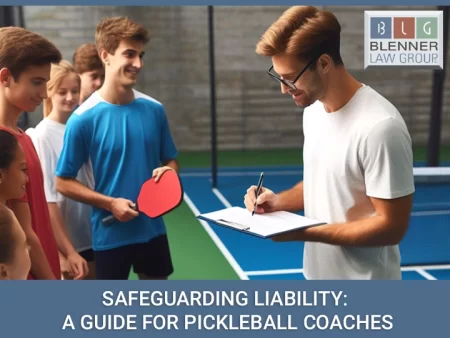 In the engaging world of pickleball, coaching can be a rewarding profession. However, like any physical sport, it presents a certain level of risk and liability. As a pickleball coach, it’s imperative to adopt measures that minimize liability and ensure the safety and well-being of your students during lessons. This guide explores the key steps to take in protecting yourself from potential legal issues and fostering a safe learning environment.
In the engaging world of pickleball, coaching can be a rewarding profession. However, like any physical sport, it presents a certain level of risk and liability. As a pickleball coach, it’s imperative to adopt measures that minimize liability and ensure the safety and well-being of your students during lessons. This guide explores the key steps to take in protecting yourself from potential legal issues and fostering a safe learning environment.
1. Adequate Certification and Training:
Before you venture into coaching, ensure you have the necessary certifications from recognized bodies like the USA Pickleball Association. Continuous education in the sport and its safety protocols is crucial in maintaining a high standard of coaching and reducing liability.
2. Comprehensive Insurance Coverage:
Invest in a comprehensive insurance policy that covers general liability, professional liability, and possibly even medical payments for any injuries that may occur during your lessons. This will provide a financial cushion in the unfortunate event of accidents.
3. Waiver and Consent Forms:
Have every participant sign a waiver and consent form, acknowledging the inherent risks involved in the sport and agreeing not to hold you responsible for any injuries sustained. It’s advisable to have these forms drafted or reviewed by a legal professional to ensure they provide maximum protection.
4. Safety Briefings:
At the beginning of each lesson or training session, provide a safety briefing to outline the rules of the game, the importance of proper equipment, and the protocols to follow in case of an accident.
5. Equipment Checks:
Ensure that all the equipment used, including paddles and nets, is in good condition. Provide, or advise on the use of, safety gear such as suitable footwear, knee pads, and eyewear to prevent injuries.
6. Supervision and Instruction:
Offer close supervision during play and clear instructions to prevent misunderstandings and accidents. Correct improper techniques that could lead to injuries and always keep safety as the priority during your lessons.
7. First Aid and Emergency Procedures:
Have a well-stocked first aid kit accessible and be trained in basic first aid procedures. Establish clear emergency protocols, and ensure there’s a communication device available to contact emergency services if necessary.
8. Document Everything:
Keep detailed records of each training session, including attendance, what was taught, and any incidents that occurred. Documentation can be vital in providing evidence in case of legal disputes.
9. Foster Open Communication:
Encourage students to report any discomfort, injuries, or concerns. Open communication will help in addressing issues promptly and preventing potential legal problems.
10. Consult with Legal Professionals:
Having a legal advisor to consult on liability issues and to stay updated on the relevant laws and regulations concerning coaching and sports liability is invaluable.
By adhering to these steps, pickleball coaches can create a safer environment for their students while significantly reducing their liability exposure. The essence of coaching lies in not only teaching the sport but also ensuring that it’s learned and played in a safe, enjoyable manner.


